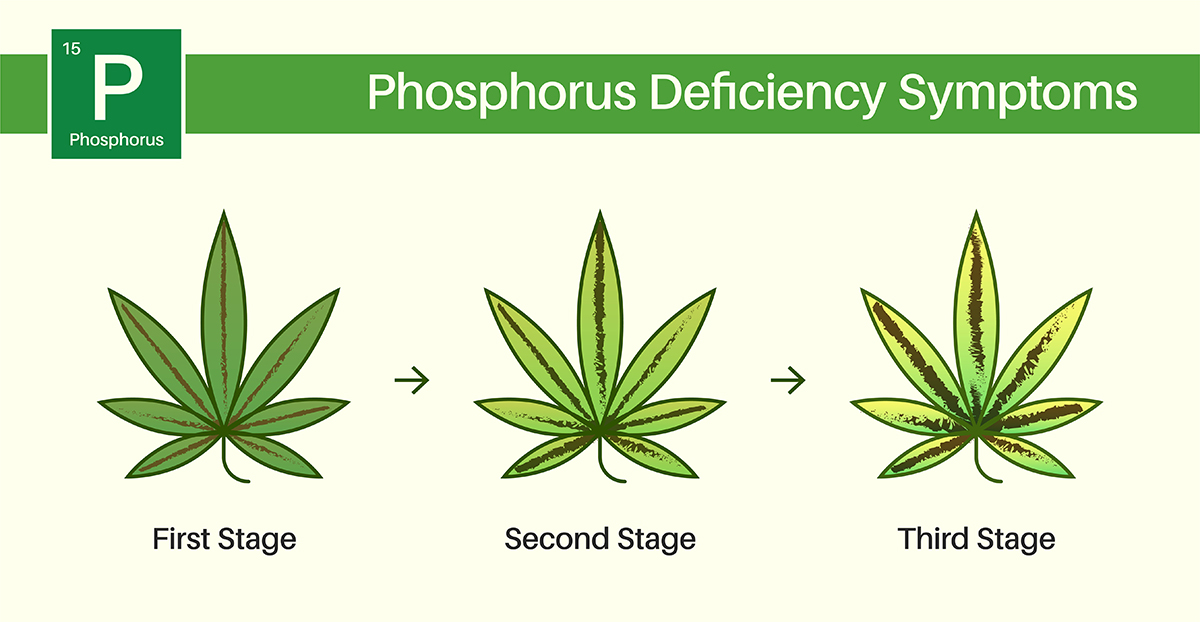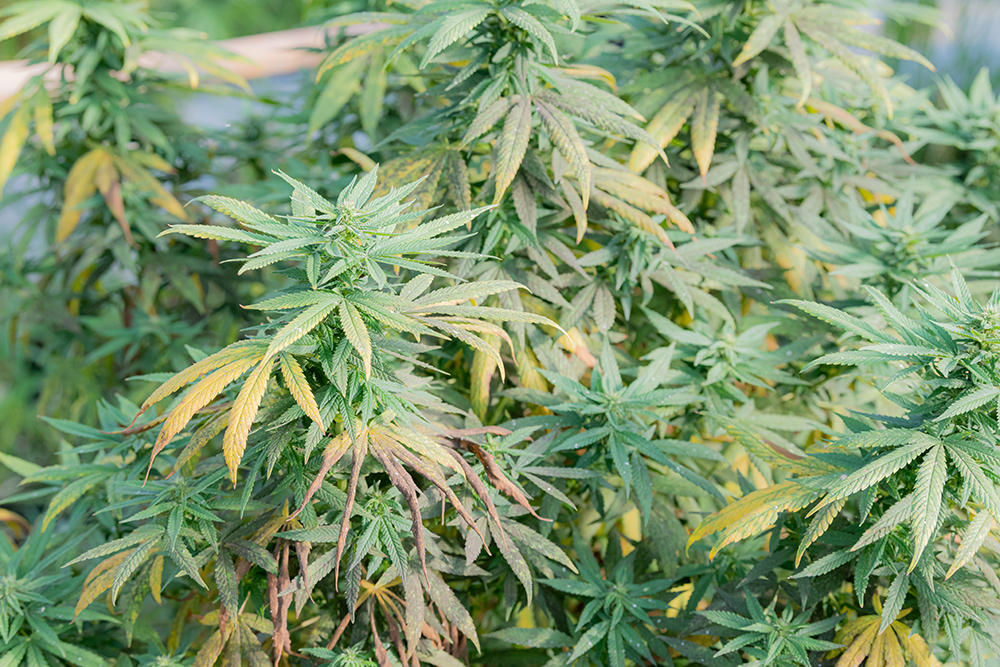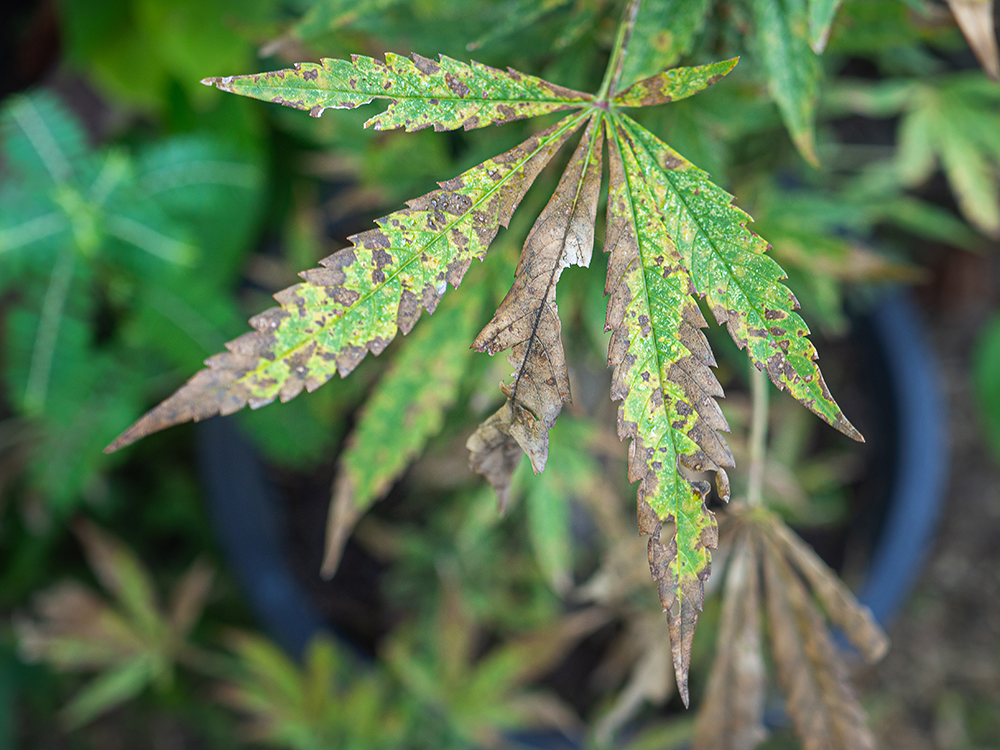Select Your Country/Region
Current Region:
 USA (EN)
USA (EN)
Choose a different country or region to see the content specific to your location
Phosphorus is an essential nutrient for growing cannabis plants. It plays a critical role in their growth and overall health. This nutrient supports the development of strong root systems, healthy buds, and optimal plant growth at every stage. Without enough phosphorus, cannabis plants cannot thrive or reach their full potential.
Phosphorus is especially crucial during the flowering stage. This is when plants require more energy to produce dense, high-quality buds. Growers who maintain the right levels of phosphorus notice better yields, improved potency, and healthier plants overall.
Phosphorus contributes to several vital processes that keep cannabis plants healthy and productive:
If phosphorus levels drop too low, cannabis plants show clear signs of stress. Leaves may change color, stunted growth may occur, and yields may decrease. In severe cases, the plant’s overall health and survival are at risk. Understanding the causes and effects of phosphorus deficiency is key to preventing these problems.

Phosphorus deficiency occurs for several reasons, many of which are preventable with the right care and attention. Knowing these causes helps growers create an environment where their plants can thrive. Here are the most common reasons cannabis plants may not get enough phosphorus:
The pH of the growing medium plays a significant role in nutrient absorption. Cannabis absorbs phosphorus most effectively within a pH range of 6.2–7.0 for soil and 5.5–6.2 for hydroponics. When the pH is too high or too low, phosphorus becomes unavailable to the plant, even if it’s present in the soil or nutrient solution. This issue, known as "nutrient lockout," is one of the most common causes of phosphorus deficiency.
Some fertilizers lack the phosphorus needed to support healthy growth, especially during the flowering stage. During this phase, cannabis plants require higher amounts of phosphorus to support the development of buds and flowers. If nutrient solutions are unbalanced or inadequate, deficiencies can quickly appear.
Cannabis plants grow best in warm, consistent environments. When temperatures drop below 60°F (15°C), the plant’s ability to absorb phosphorus slows down. Cold conditions disrupt the plant's energy balance, reducing its ability to take up and use nutrients effectively.
The quality of the water used for irrigation can significantly impact nutrient absorption. Hard water with high mineral content or water containing contaminants can block phosphorus uptake. These issues can create an imbalance in the growing medium, making nutrients unavailable to the plant. Using clean, filtered water helps prevent these problems.
Overfeeding plants with certain nutrients, such as calcium, zinc, or iron, can interfere with phosphorus absorption. These excess elements create imbalances that block phosphorus from being taken up by the plant. Balanced feeding schedules are essential to avoid nutrient lockout.
Compacted soil or low-quality growing mediums can prevent roots from accessing nutrients. A proper growing medium should be loose, well-aerated, and rich in organic matter. This ensures that phosphorus and other nutrients are available to the roots.

Phosphorus deficiency has noticeable effects on cannabis plants, impacting their growth, health, and final yield. Identifying these symptoms early is critical to correcting the problem before it worsens. Here are the most common signs and results of phosphorus deficiency:
Leaves may turn dark green, blue-green, or develop purple or reddish edges. This is most noticeable on older leaves. Unlike nitrogen deficiencies, phosphorus issues do not typically cause leaves to turn yellow. These color changes indicate that the plant is struggling to transport nutrients effectively.
Without enough phosphorus, cannabis plants grow more slowly. They may appear stunted or smaller than healthy plants. Weak root systems further limit water and nutrient absorption, compounding the problem.
Phosphorus is essential during the flowering stage, when plants produce buds. Deficient plants often yield fewer and smaller buds. Additionally, the flowers may lack the density and potency that growers aim to achieve.
Phosphorus plays a role in strengthening stems and branches. Plants with insufficient phosphorus often develop weak, brittle stems. This makes it difficult for them to support the weight of heavy buds during flowering.
As phosphorus deficiency worsens, older leaves may develop necrotic (dead) spots. These brown, dried areas are a sign that the plant is redirecting phosphorus to support newer growth.
Plants lacking phosphorus take longer to flower and mature. This can disrupt harvest schedules and reduce the quality of the final product. In extreme cases, the plant may never fully develop.
Preventing phosphorus deficiency is easier than treating it after it occurs. Proactive care and monitoring are essential for keeping cannabis plants healthy. Here are some steps to prevent and address phosphorus deficiency:
Regularly test the pH of your soil or hydroponic solution. Adjust it as needed to keep it within the ideal range for phosphorus absorption. This simple step can prevent most nutrient lockout issues.
Choose high-quality fertilizers that contain the right balance of nutrients for each growth stage. During the flowering stage, increase phosphorus levels to support bud development.
Use clean, filtered water to prevent nutrient imbalances caused by contaminants or excess minerals. Regular testing can help identify potential issues before they affect your plants.
Keep the grow environment warm and consistent. Avoid exposing plants to temperatures below 60°F (15°C), as this can slow down nutrient absorption.
Stick to a balanced feeding schedule. Overloading plants with certain nutrients can block phosphorus uptake and cause deficiencies.
Use loose, well-aerated soil or high-quality hydroponic mediums. These allow roots to access nutrients more effectively.

Dosatron’s hydroponic dosing pumps are a game-changer for cannabis growers. These pumps deliver nutrients accurately and consistently, giving plants the phosphorus they need at the appropriate stages. Here’s how Dosatron systems can help:
Dosatron pumps allow growers to fine-tune the amount of phosphorus in their nutrient solution. This precision helps prevent underfeeding and overfeeding, which are common causes of nutrient imbalances.
Dosatron systems can integrate pH stabilizers into the nutrient solution. This ensures that the pH remains within the ideal range for phosphorus absorption.
Cannabis cultivation often requires a combination of macronutrients, micronutrients, and additives. Overuse of certain elements like calcium or zinc can interfere with phosphorus uptake, leading to deficiencies. Dosatron pumps excel at mixing multiple nutrients uniformly, reducing the risk of opposing interactions. This balanced delivery ensures that phosphorus remains available to plants, even in nutrient-rich solutions.
Whether you’re using hydroponics, aeroponics, or a hybrid system, Dosatron pumps can be seamlessly integrated into your setup. They’re versatile enough to handle various nutrient formulas and irrigation systems, making them ideal for cannabis growers of all scales. For hydroponic systems, where precise nutrient management is critical, Dosatron pumps ensure a constant supply of phosphorus to the roots, avoiding the risks associated with manual mixing or imprecise dosing.
Dosatron pumps offer several advantages beyond preventing phosphorus deficiency:
Many cannabis growers have experienced better results with Dosatron systems. For example, a commercial grower struggling with phosphorus deficiencies switched to Dosatron pumps. They reported an increase in yield, healthier plants, and larger buds after implementing the system. By automating nutrient delivery and maintaining stable pH levels, Dosatron pumps helped optimize the grower’s entire operation.
Phosphorus deficiency in cannabis can significantly impact plant health and yield, but it is entirely preventable with the right tools and practices.
Dosatron hydroponic pumps offer a proven solution for precise and consistent nutrient delivery, ensuring your plants receive the phosphorus they need to thrive. By integrating Dosatron into your cultivation system, you can optimize nutrient management, enhance plant health, and achieve better harvests.
Whether you’re a home grower or managing a commercial operation, Dosatron pumps provide the reliability and precision you need to prevent phosphorus deficiency and maximize the potential of your cannabis plants.